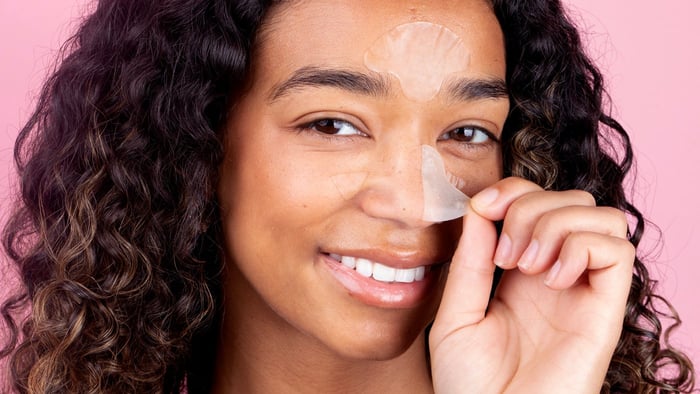The term “textured skin” covers a wide range of causes. When you think about it texture really just means the feel of the skin and there are a variety of things that can affect the way your skin feels and looks. Like acne can make the skin feel a little bumpy, or dryness can make it feel a bit rough.
Skin texture is pretty natural. At some point in your life you’ll likely experience acne, clogged pores, sun damage (which can also influence skin texture), and scarring all of which affect the feel and look of your skin.
But just because you may be dealing with texture now, that doesn’t mean it will be a permanent fixture on your skin. Skin texture can be minimized, whether at home or at in-office procedure. It really all depends on the type of skin texture you’re dealing with.
Causes of skin texture
To know the best way to treat skin texture, you need to know what caused it first. Sometimes prevention can help to avoid skin texture issues down the road.
Acne and acne scars
If you’ve dealt with acne breakouts at any point in your life then you may have also dealt with acne scarring. Acne itself forms as dead skin, bacteria, and oil gets trapped in pores.
Depending on the severity of the acne, a scar may also be left behind. The type of scar can sometimes just appear as a discolored spot (like a red or dark spot) or a deep scar that changes the texture of the skin, such as “ice pick scars.” Post-blemish scars can either appear as sunken scars or raised, both of which affect skin texture.
When it comes to the more severe deeper scars, it’s best to consult a dermatologist to advise on the best treatment.
Sun Damage
Without proper sun protection, sun damage can occur on the skin and not just through visible painful-looking sunburns. Sun damage also causes the breakdown of collagen in the skin. That’s why when you see the photos comparing long term use of sunscreen to no sunscreen, the person with sunscreen typically has a bit more youthful-looking skin.
With loss of collagen, the skin loses elasticity and firmness. An effect of this is larger-looking pores and a rough skin texture.
Aging
Similar to sun damage, natural aging involves the breakdown of collagen. So much like the effects of sun damage, aging can result in larger-looking pores, and fine lines and wrinkles.
But without an actual fountain of youth, aging is not exactly something you can stop or prevent. But you can always help support the skin and keep it moisturized to help reduce the look of texture that comes with aging.
How to improve skin texture
After identifying the cause of your skin texture, you can find the best way to help minimize it and prevent it (but only for some causes of textured skin).

Exfoliate the skin
For acne and acne scarring, the best way to treat textured skin is to prevent the underlying cause. So if you have acne-prone skin, try adding some exfoliating ingredients in your routine to help curb breakouts. For example, Salicylic Acid is a great pore-exfoliating ingredient that breaks up pore-clogging elements to stop the breakouts from popping up.
Our Pore Serum is made with Salicylic Acid and Glycolic Acid (both exfoliating ingredients) to clear away excess oil and dead skin that can clog up pores to ultimately smooth the look of skin texture.
Try a Retinol
If your texture comes from a combination of things like acne, acne scars, and clogged pores, then try adding Retinol to your skin. Retinol has multiple benefits for a wide range of skin concerns like breakouts, discoloration, and clogged pores. So it essentially helps deal with multiple causes of skin texture.
But, when it comes to Retinol it pays to take it slow. First off you have to make sure that the Retinol you choose is the right fit for your skin. So make sure to patch test a Retinol product before using it on a regular basis.
Apply sunscreen
If your texture comes from sun damage, it’s not too late to start incorporating a good sunscreen into your routine. There are plenty of options out in the market now that you can choose from so if you’re worried about white cast or level of SPF, then you are likely to find something that works for you.
Keep the skin moisturized
If your textured skin comes from dryness and rough/flaky patches, then it's best to keep your skin moisturized. And if you have particularly dry skin, try sticking to cream moisturizers with some emollients like Shea Butter.
Final Notes…
Not all skin texture can be minimized at home. Some types of acne scars that have caused deep scarring likely won’t get better with just your at-home skin care. Instead you should seek a dermatologists’ advice to consider next steps, some of which may involve in-office procedures.















